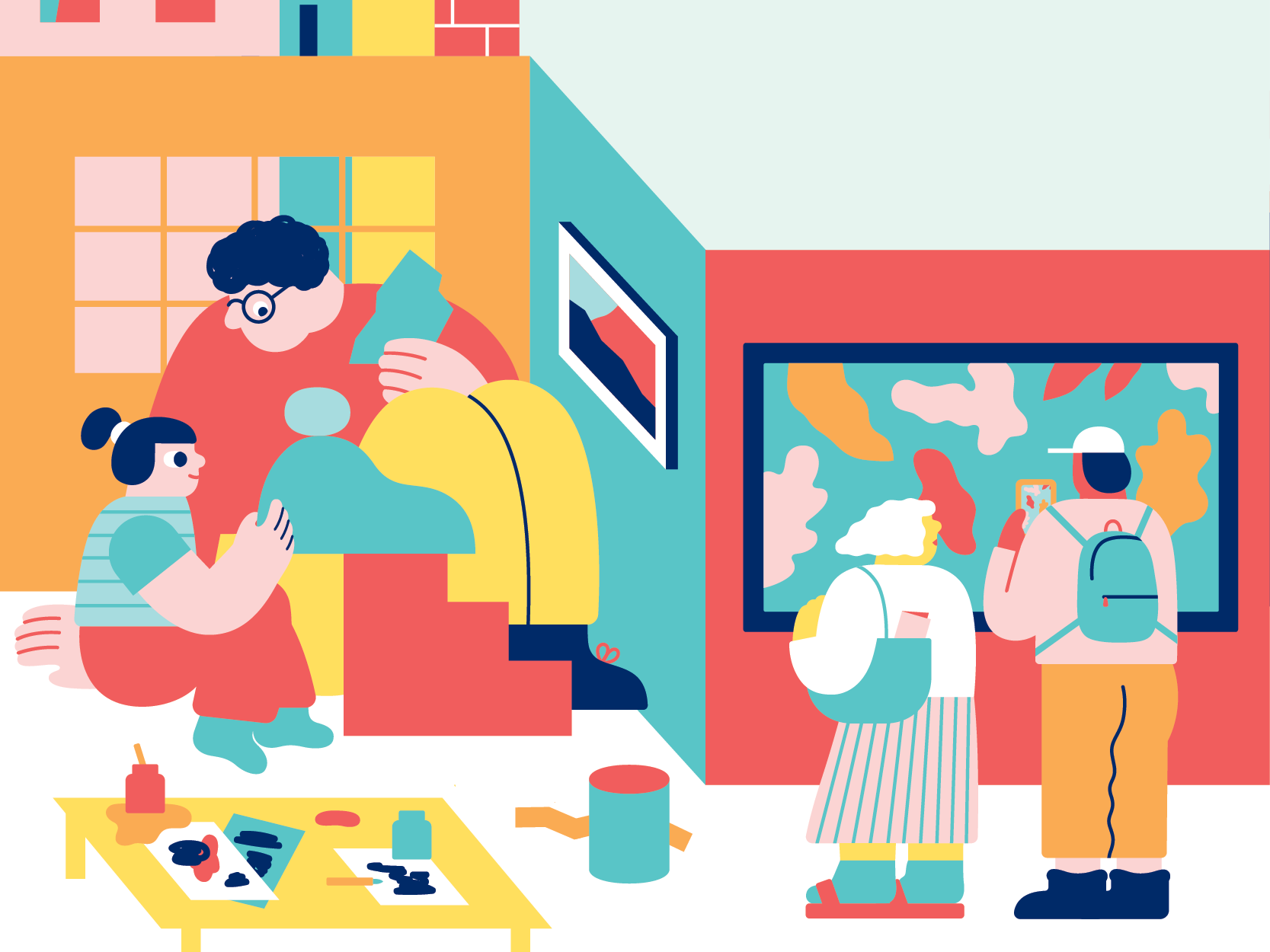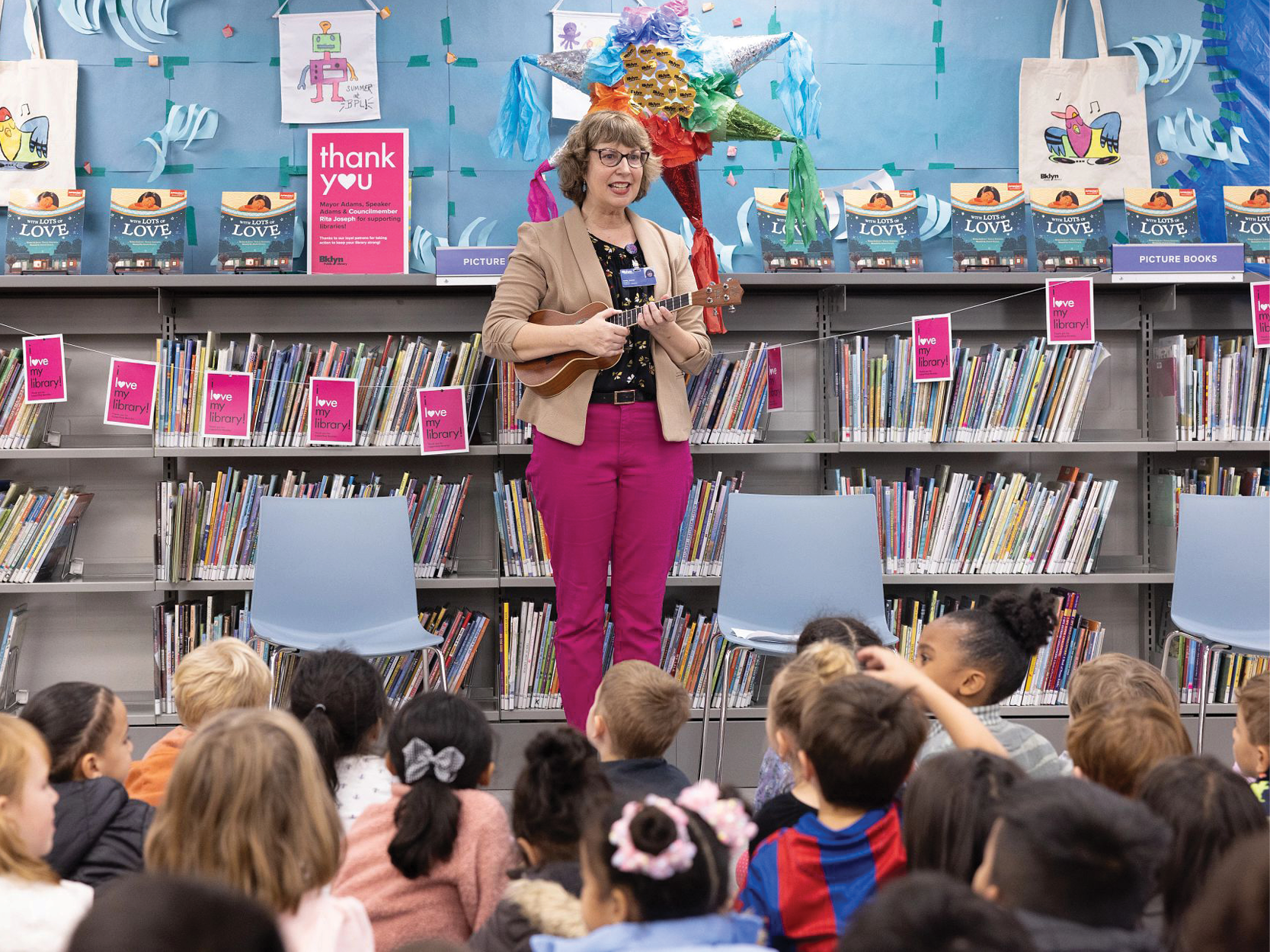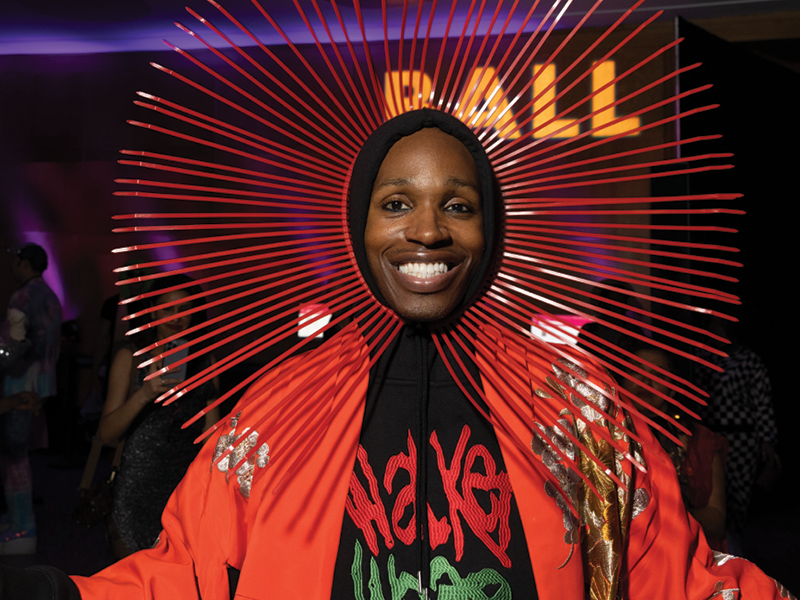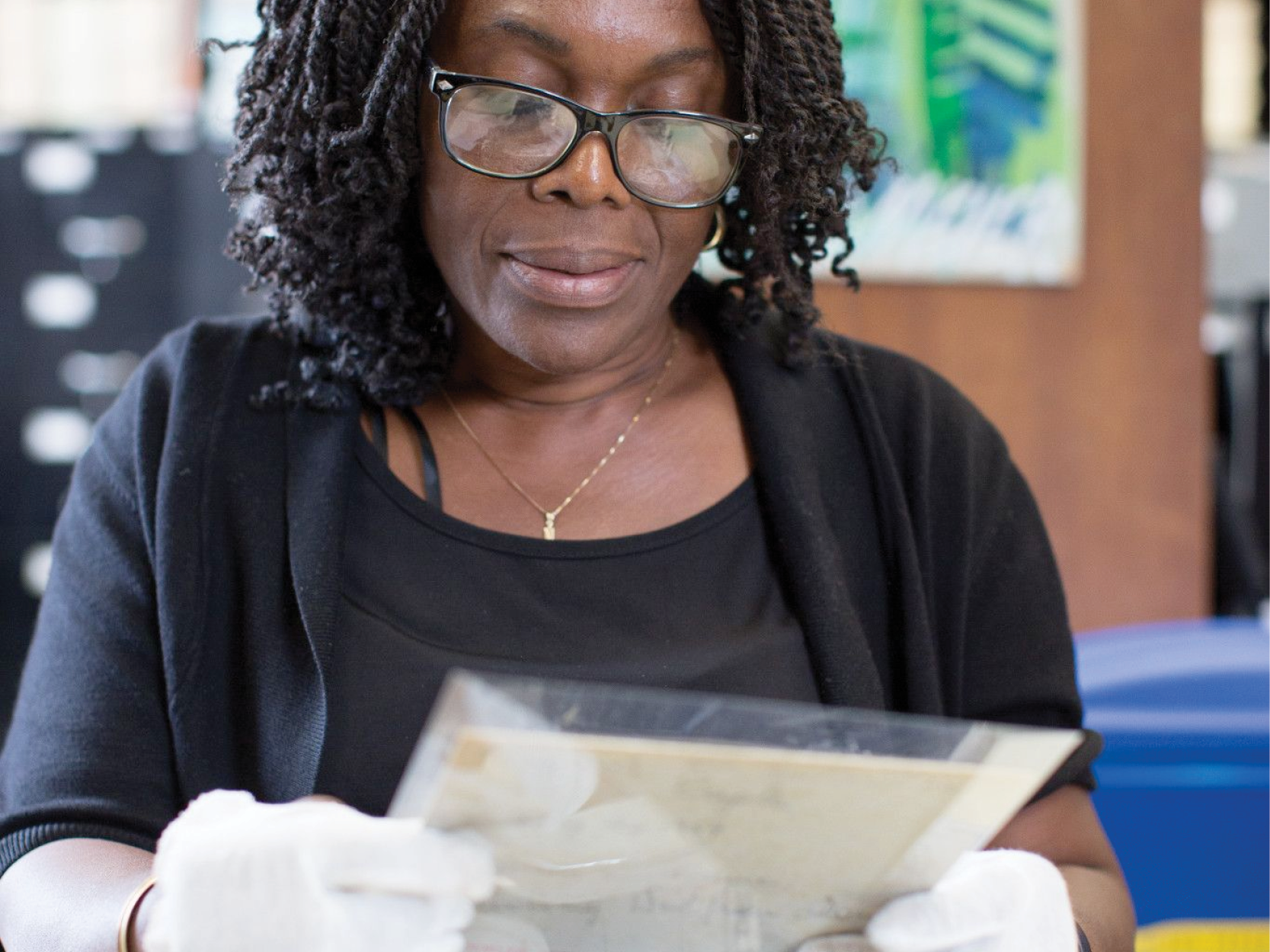A few weekends ago, after a beautiful Saturday morning of yoga on the Brooklyn Museum stoop, I had the chance to make it out to their special exhibition: Virgil Abloh: “Figures of Speech.” It celebrates the life and work of the late fashion designer, architect, DJ, artist and entrepreneur Virgil Abloh, well-known for his fashion brand Off-White, among many other projects.
In my role at the library, I work as a Community Relations Coordinator for the BKLYN Incubator program, which funds collaborations between community partners and library staff to implement new and innovative programs throughout the library system, and is generously supported by the Charles H. Revson Foundation. The spirit of Incubator is all about collaboration. It emphasizes knowledge-sharing and innovation and tests new ideas in order to fill community needs that aren’t necessarily being met.
What really struck me about the Figures of Speech exhibition was how clearly that spirit of collaboration and innovation were reflected throughout Abloh’s work, legacy, and his approach to creation. So many of the works on display were the results of collaboration between different artists and professionals across diverse industries and locations around the globe. He consistently pulled ideas, visuals, and elements from other people’s work to re-imagine them and stitch together something completely new. There are many pieces from some of his Pyrex Vision clothing lines where, for example, he would take Champion t-shirts, sixteenth-century Carvaggio paintings, references to the Chicago Bulls and blend them all together to make a whole new line. The majority of pieces are from his many collaborations with people across different mediums, such as his collaboration with artist Jenny Holzer to make a collection in 2017 titled “Temperature” relating to the refugee crisis.
The exhibit also includes early prototypes and sketches for some of his collaborative architectural projects that he was exploring before he died, as well as developmental sketches for some of his fashion lines. Many objects in the exhibit are laid out on plywood tables that were custom made in collaboration with Abloh’s design studio: “They are informed by the late artist’s understanding of all things as prototypes or works in progress.” It was beautiful to see these ideas develop and change across a series of pages and perspectives. It evoked, for me, the part of our Incubator process which we are currently wrapping up: the Ideation Stage. Collaborative groups work together on a slew of different ideas they have for their communities, sketch them out and develop them into one robust prototype, all over the course of a few hours (we call this an “Idea Sprint”). This prototype is later developed into a fully-fleshed out proposal. It was beautiful to see iterations of this process from such a well-established and prolific designer and creator, and to see the ways our ideas and thoughts change and evolve, especially when we start to involve different perspectives into the process.
In the wake of this museum visit and these reflections, I’ve compiled a brief list of five books that reflects this collaborative and development-focused perspective:
The first book is The Dawn of Everything: A New History of Humanity, which is a product of years of collaboration between David Graeber and David Wengrow, and published just a year after Graeber’s death in 2020. It combines Graeber’s anthropological and Wengrow’s archeological backgrounds, along with a whole host of other academic fields and works (history, sociology, political philosophy, math) to scrutinize and reconsider how we study, learn, and think about the history of humans and society as a whole. When I think of collaboration, this is one of the first books that comes to mind, because it combines so many different disciplines to talk about big questions and even bigger pictures of our human understanding. It definitely gave me a broader understanding of my own historical visualization and knowledge and has made me rethink the way I see the world. That’s what I think collaborative perspectives and knowledge is all about! Broadening the horizons and possibilities.
The next selection focuses on the ideation and development process, which is A Clockwork Orange by Anthony Burgess. It was a cross-medium effort (one could say a medium-collaborative effort!) for me to include this selection: based off two podcasts, a song, a movie, and the book itself. The first podcast episode comes from Malcolm Gladwell’s Revisionist History and is called "Hallelujah" which talks about different kinds of genius: specifically Leonard Cohen, who kept writing and re-writing, adding to and taking away from his very famous song “Hallelujah.” It’s a vision of ideation that never ends—always looking for a better version, a different way to develop something into something new (sometimes to its own detriment). This story stuck with me and re-rose in my memory when I listened to a 13-minute podcast piece called "Never Hear the End of It" by Sean Cole for This American Life. In Leonard Cohen-esque fashion, Burgess kept changing the ending to his famous novel. The original British version had a very optimistic ending, unlike the one depicted in Stanley Kubrick’s film version of the novel, which is where I originally encountered the story (I won’t spoil either ending for those who have yet to read or see either version). I chose Burgess’ novel because I liked that he kept his idea alive and evolving: constantly in development. He let the world shape and change the ending of his story, forever changing it to eschew a different perspective based on life experiences. And the fun of this pick is that depending on which version of the book you check out, you might get a whole different takeaway!
Next up is Emergent Strategy: Shaping Change, Changing Worlds by adrienne maree brown. This book is described by some as a “radical self-help” book, but I believe it also falls into the categories of “society-help,” social science and learning, and even political and community organizing and engagement. It’s truly one of my favorite books because it provides an encompassing approach to life- and community-building that is applicable at so many scales (the personal, local, political, global). I included this book in the list because one of the core tenets of emergent strategy is “interdependence and decentralization.” It focuses on the ways we work together and learn from each other to create change in our lives, as well as the nonlinear and iterative aspects of change. And if anyone has ever worked collaboratively on a project or program before, you know that a key characteristic of collaboration and idea-sharing is that the process is never truly linear, but takes different twists and turns—forwards, backwards and sideways. I couldn’t recommend this book more!
Another work of fiction that makes the list is 1Q84 by Haruki Murakami. I’m only about halfway through this one (it is a much thicker choice, coming in at upwards of 800 pages) but I have picked its initial narrative premise. The jumping off point for the novel is a seventeen-year-old girl’s submission to a literary contest which is a really compelling and enthralling story. The story itself is amazing and needs to be told, but the writing is not good. A well-established editor and an aspiring writer decide to secretly collaborate with the young girl to re-write the story in order to win the literary contest and create a true masterpiece. The premise of the novel, in other words, is a collaborative effort that melds different characters’ skillsets and experiences, much in the spirit of Abloh.
The final selection is Living Nations, Living Words: An Anthology of First Peoples Poetry. It was collected and edited by Joy Harjo, the United States’ first Native American Poet Laureate. As an anthology, it is the epitome of what collaboration can be—a patchwork of different poems centering around an array of themes from different native writers all across the US to create one beautiful breadth of work. It has a corresponding digital map and recordings of the authors reading their poetry on the Library of Congress' website.
This blog post reflects the opinions of the author and does not necessarily represent the views of Brooklyn Public Library.
Post a Comment
While BPL encourages an open forum, posts and comments are moderated by library staff. BPL reserves the right, within its sole discretion, not to post and to remove submissions or comments that are unlawful or violate this policy. While comments will not be edited by BPL personnel, a comment may be deleted if it violates our comment policy.
eNews Signup
Get the latest updates from BPL and be the first to know about new programs, author talks, exciting events and opportunities to support your local library.







